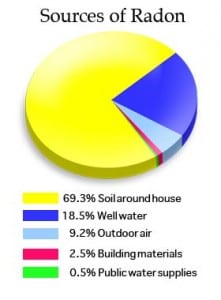Conducting Tests and Inspections for a Healthy Home
Healthy Home Testing
Sick Building Syndrome?
The term Sick Building Syndrome is used to describe situations in which building occupants experience acute negative physical and mental effects that appear to be linked to time spent in a contaminated area when no specific illness or cause can be identified. People in sick buildings complain of symptoms such as headaches, eye, nose, or throat irritations, dizziness, nausea, difficulty in concentrating, along with physical and mental fatigue.
The reason the home or building may be suspected is that most complainants report relief soon after leaving the infected enclosure. Although not all the reasons for SBS are known, it is logically assumed that the negative health effects of sick building syndrome can be at least partly attributed to various mold, bacterial and viral contamination.
Today we know mold, bacteria, asbestos, lead, radon and other contaminates that were taken for granted over the years are in reality the cause of many of the health issues that people are experiencing today and will experience in the future. Don’t let your home or your ignorance make you sick or cut your life short. Schedule a test TODAY and get peace of mind!
Radon Testing
What is Radon?
Radon is a radioactive gas that has been found in homes all over the United States. It comes from the natural breakdown of uranium in soil, rock and water and gets into the air you breathe. Radon typically moves up through the ground to the air above and into your home through cracks and other holes in the foundation. Radon can also enter your home through well water. Your home can trap radon inside.
Any home can have a radon problem. This means new and old homes, well-sealed and drafty homes, and homes with or without basements. In fact, you and your family are most likely to get your greatest radiation exposure at home. That is where you spend most of your time.
Nearly 1 out of every 15 homes in the United States is estimated to have an elevated radon level (4 pCi/L or more). Elevated levels of radon gas have been found in homes in Maryland and Virginia.
Any home may have radon problems.
How is Radon Levels Be Lowered?
A qualified radon-reduction contractor can reduce the radon levels in your home. Any mitigation measures taken or system installed in your home must conform to your state’s regulations. Albrecht Inspections can suggest a reputable contractor in your area to reduce the radon in your home.
